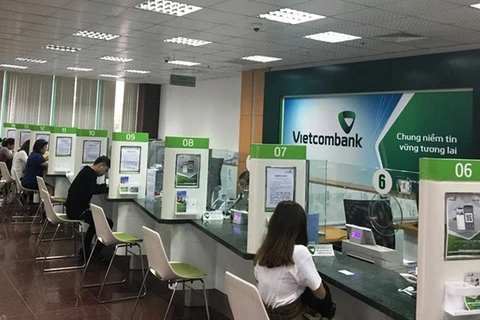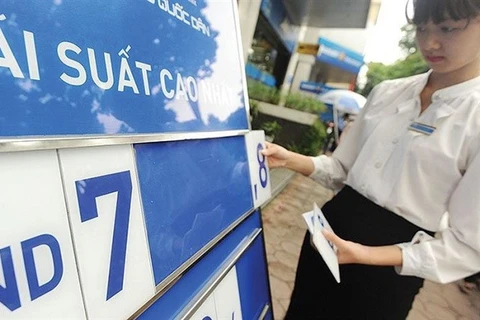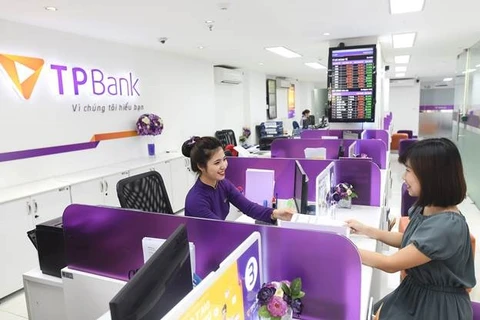In 2018, the banking sector witnessed many achievements such as increasing foreign exchange reserves, remittances, and profit, but also faced challenges in interest and foreign exchange rates.
By the end of 2018, the banking sector posted record high foreign exchange reserves and remittances, limited credit growth, and remarkable profits. However, challenges remained, including high interest rates and a lack of mid- and long-term capital.
Foreign exchange reserves hit record high of 63.5 billion USD
At a teleconference between the Government and provinces and cities in June 2018, Governor of the State Bank of Vietnam (SBV) Le Minh Hung announced that the nation’s foreign exchange reserves reached approximately 63.5 billion USD, the highest level ever recorded to date. However, the figure has not been updated since June.
In early 2018, when the supply and demand of foreign currencies were more favourable, the SBV bought currencies to supplement the state foreign exchange reserves. On February 7, 2018 it began listing a three-month forward buying rate to delay the introduction of VND in buying foreign currencies. The move helped to control money supply and inflation, while obtaining foreign currencies to boost foreign exchange reserves, encouraging businesses to use foreign currency derivatives to prevent exchange rate risks.
Since June, the foreign currency market has been under pressure from negative global developments and poor investor confidence in the domestic market. The SBV has promptly taken solutions to stabilise the market and ensure smooth foreign currency transactions.
Reference exchange rate increased by 400 VND
On December 28 – the last working day of 2018, the SBV continued to raise the reference exchange rate of VND/USD by 20 VND to 22,825 VND, the highest level in 2018.
As such, from the beginning of the year, the rate had been increased by 400 VND, or 1.78 percent, meeting the SBV’s yearly goal of limiting the rate increase less than 2 percent. It marked a successful year for the management of the foreign exchange market despite pressure and suspicions.
The increase was higher than the 1.2 percent recorded in 2016 and 2017. However, this was necessary in the context that the currencies of other countries devalued strongly against the US dollar, which accidentally caused the Vietnamese dong to appreciate against other currencies, putting pressure on the competitive capacity of Vietnamese exports.
Overseas remittance amounted to 15.9 billion USD
According to the State Committee for Overseas Vietnamese Affairs, in 2018, the amount of remittances was estimated at 15.9 billion USD, equivalent to 6.6 percent of Vietnam’s GDP. Notably, in the past 12 years, the flow of remittances has recorded consecutive increases ranging from 10 to 15 percent per year.
There are currently 4.5 million overseas Vietnamese residing across 110 countries and territories, 80 percent of them living in developed countries. Of which, nearly 3,000 businesses owned by Vietnamese expats are operating in the home country with a total capital of about 4 billion USD. According to the World Bank, Vietnam continued to be among the largest recipients of remittances in the world last year.
Credit growth hits four-year low
According to estimates of the National Financial Supervisory Committee, 2018 credit growth was at its lowest level in four years, at about 14-15 percent. Experts believed this rate was reasonable when the credit/GDP scale was high, at about 135 percent. In fact, despite the low credit growth, the economy’s GDP reached 7.08 percent, the highest in the last 10 years.
Decree No.116 issued to limit black credit
On September 7, 2018, the Government issued Decree No.116/2018/ND-CP on amending and supplementing a number of articles of Decree No.55/2015/ND-CP dated June 9, 2015 on credit policy serving agricultural and rural development.
One of the new points of Decree No.116 was to double the maximum lending amount without requiring collateral for farmers. As the Government wanted to support clean and high-tech agriculture, a number of new mechanisms were also issued, including lending up to 70 percent of the total project cost (without collateral), and allowing the use of agricultural-land-related assets (greenhouse farming) for mortgage.
SBV leaders emphasised that raising the level of loans without collateral promptly met demands for capital of farmers, particularly those live in remote areas, and prevented them from resorting to other capital sources such as black credit.
Profit remains at high level
Despite the low credit growth, the State Bank of Vietnam strictly controlled credit flowing into real estate, securities, and consumer sectors. However, a large number of banks still earned record profits in 2018.
According to the Financial Supervisory Committee, after-tax profits of the credit institution system increased some 40 percent. At the same time, their process of tackling bad debts was faster, handling a total value of 30 percent higher than that of 2017.
Banks rushed to issue bonds
In addition to the interest rate competition, banks were racing to issue bonds to mobilise capital, supplementing their mid- and long-term sources.
Typically, the BIDV and VietinBank issued 4 trillion VND and 450 billion VND worth of bonds, respectively, while Military Bank successfully issued its five-year one-day bonds worth over 1.4 trillion VND. VIB succeeded in issuing bonds to mobilise 2.8 trillion VND. HDBank continued to mobilise 1 trillion VND worth of three-year bonds in the form of separate issuance after its previous issuance of bonds valued at 5 trillion VND.
Experts said banks were hungry for long-term capital to improve their capital adequacy ratio. However, the experts warned it was not a long-term solution, as the over-issuance of bonds could result in future risks, affecting the banks’ profits.
Deposit interest rates surge
Along with the rise of the exchange rate, interest rates also increased sharply in 2018. Regarding the interbank market, from August towards the end of the year, banks had to borrow each other under high interest rates, with the overnight rate often maintained above 4.5 percent a year, sometimes reached 6 percent per year.
In the market serving civilians and organisations, deposit interest rates were continuously pushed up throughout the last five months of the year. At the end of December, the interest rate for terms less than six months in many banks reached the ceiling level of 5.5 percent a year; while that for the term of between six months and below 12 months was over 7 percent per year, even 7.2-7.5 percent in some banks. The interest rate for terms of 12 months or longer, meanwhile, was increased to more than 8 percent a year.
Although the deposit rate increased, the lending interest rates were still unchanged by most banks till the end of 2018 for key sectors like business production, agriculture, and high technology. However, in some sensitive sectors, including real estate, lending interest rates inched slightly by 1-1.5 percent, because the SBV wanted to tighten capital flowing into these areas. Experts also acknowledged that if deposit rates still increase at the beginning of 2019, it would be difficult to maintain lending rates at the same level as in the previous year. -VNA



























